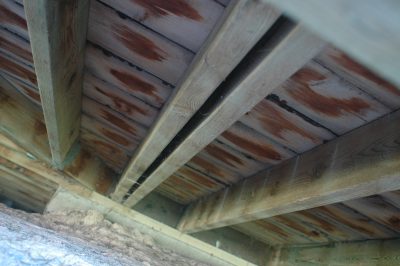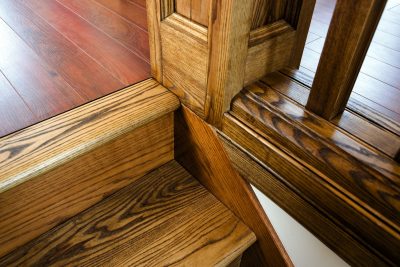Neat Caulking Application
Q: How can I neatly apply caulking to the joint where my wooden garage door frame meets surrounding brick? I know you’ve written about applying masking tape on each side of the joint, but isn’t brick too rough for that?
 A: I’ve used tape to make caulking joints tidy in many applications, and it even works on fairly rough masonry. You just apply tape on each side of the joint about 1/4” away from the centre line, apply a bead of caulking, smooth it with your finger, then peel off the tape. Since caulking is viscous, it really doesn’t flow underneath the tape that much, even if a small gap is present. Spend some time working the tape as deeply into the masonry texture as possible using your thumb, apply the caulking, then pull the tape straight off and drop it into a garbage bag. By putting the tape on in overlapped 18” to 24”-long pieces, you’ll find it easier to control the smaller pieces as you peel them off, without getting wet caulking on everything.
A: I’ve used tape to make caulking joints tidy in many applications, and it even works on fairly rough masonry. You just apply tape on each side of the joint about 1/4” away from the centre line, apply a bead of caulking, smooth it with your finger, then peel off the tape. Since caulking is viscous, it really doesn’t flow underneath the tape that much, even if a small gap is present. Spend some time working the tape as deeply into the masonry texture as possible using your thumb, apply the caulking, then pull the tape straight off and drop it into a garbage bag. By putting the tape on in overlapped 18” to 24”-long pieces, you’ll find it easier to control the smaller pieces as you peel them off, without getting wet caulking on everything.
Doubling Deck Board Life
Q: How should I space wooden boards on a new deck? Builders in my area don’t space boards at all during construction, relying on natural shrinkage of the wet lumber to create the right amount of gap to allow water drainage. Is this correct?
 A: Yes, sometimes deck lumber is wet enough to shrink considerably after installation, but not always. This makes it tricky to guess how wide to space deck boards along their side edges. Thats why my preferred approach is to use a moisture meter to assess the deck wood beforehand. If it’s more than 20% moisture, then I leave little or no gap. If it’s 14% to 16%, I use a nail as a spacer. Wood in most parts of Canada never gets any drier than 12% to 14%.
A: Yes, sometimes deck lumber is wet enough to shrink considerably after installation, but not always. This makes it tricky to guess how wide to space deck boards along their side edges. Thats why my preferred approach is to use a moisture meter to assess the deck wood beforehand. If it’s more than 20% moisture, then I leave little or no gap. If it’s 14% to 16%, I use a nail as a spacer. Wood in most parts of Canada never gets any drier than 12% to 14%.
For people who can’t get their hands on a moisture meter, the only other option is to let deck lumber sit for a while and dry. Shade is the best place for this to happen since it reduces warping. It’s also necessary to have layers of wood separated in the pile by strips to allow air movement and drying.
A much bigger question has to do with spacing deck boards on their ends. This isn’t usually done, but it increases deck life enormously. You do need to install double-joists every so often to allow deck boards to be installed with spaced ends, but the increase in deck board life is huge. See my quick video tutorial to learn how.
Applying a Repairable Wood Finish
Q: What’s the best type of oil to use for finishing indoor stairs? I don’t want to use stain and urethane since it’s difficult to repair wear when it sets in. I’m also looking for something that imparts an amber tone to the wood.
 A: You’re right that oil is a great option for finishing interior wood because it’s so repairable. When wear shows, just wipe on more oil. There are different kinds of oil you can use to finish stairs, but my favourite is called Deftoil. I’ve used it for years and it works really well. It comes clear or in various shades of brown. You wipe it on, let it sit for 15 to 30 minutes, then wipe it all off. The oil that has soaked into the wood remains to protect and colour the surface. The darker the oil you choose, the more important it is that the wood be smooth and free of scratches or mill marks. Darker colours cause flaws to show up more prominently, so you need to take care if you want good results.
A: You’re right that oil is a great option for finishing interior wood because it’s so repairable. When wear shows, just wipe on more oil. There are different kinds of oil you can use to finish stairs, but my favourite is called Deftoil. I’ve used it for years and it works really well. It comes clear or in various shades of brown. You wipe it on, let it sit for 15 to 30 minutes, then wipe it all off. The oil that has soaked into the wood remains to protect and colour the surface. The darker the oil you choose, the more important it is that the wood be smooth and free of scratches or mill marks. Darker colours cause flaws to show up more prominently, so you need to take care if you want good results.



